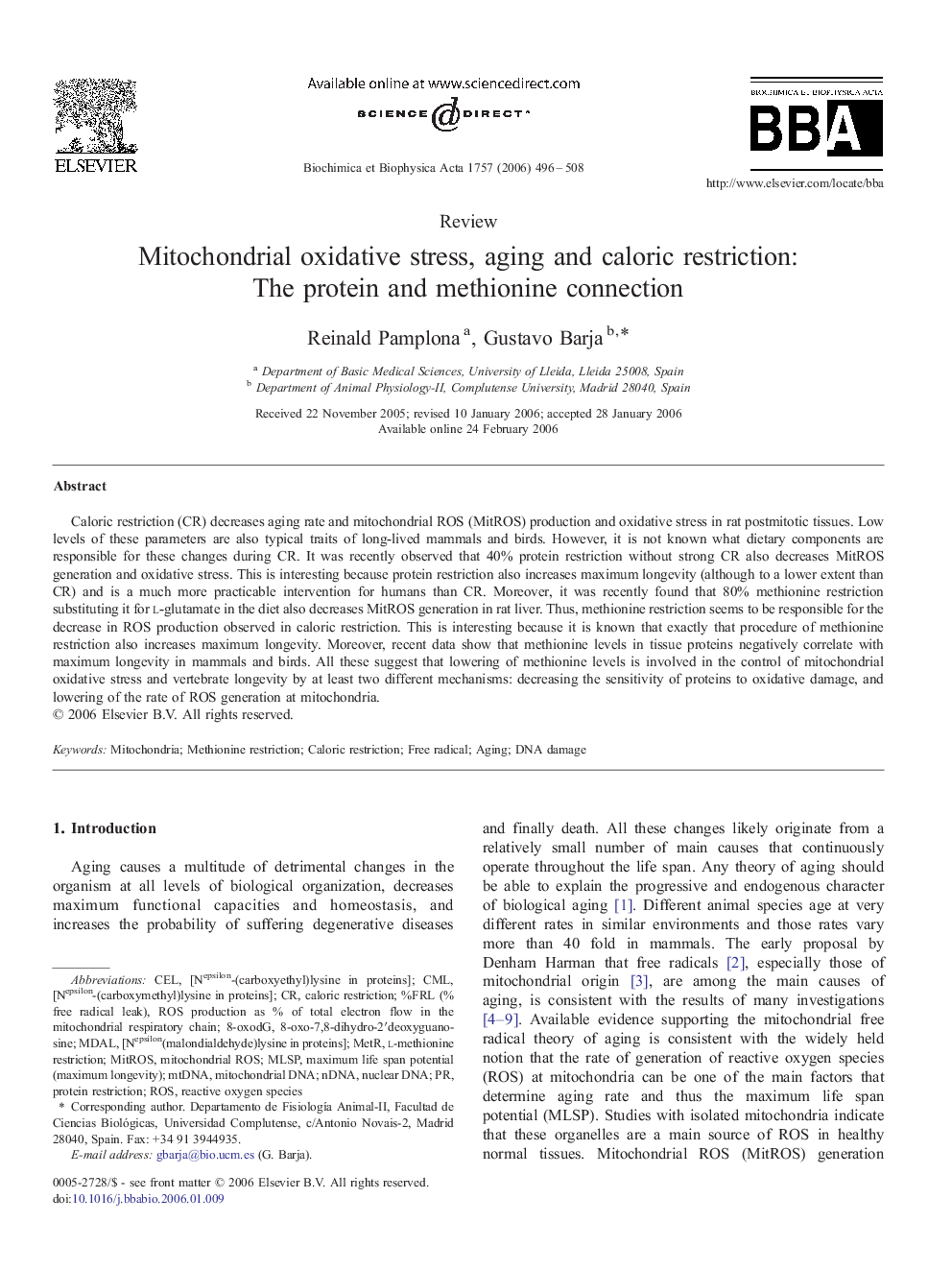| کد مقاله | کد نشریه | سال انتشار | مقاله انگلیسی | نسخه تمام متن |
|---|---|---|---|---|
| 1943717 | 1537056 | 2006 | 13 صفحه PDF | دانلود رایگان |

Caloric restriction (CR) decreases aging rate and mitochondrial ROS (MitROS) production and oxidative stress in rat postmitotic tissues. Low levels of these parameters are also typical traits of long-lived mammals and birds. However, it is not known what dietary components are responsible for these changes during CR. It was recently observed that 40% protein restriction without strong CR also decreases MitROS generation and oxidative stress. This is interesting because protein restriction also increases maximum longevity (although to a lower extent than CR) and is a much more practicable intervention for humans than CR. Moreover, it was recently found that 80% methionine restriction substituting it for l-glutamate in the diet also decreases MitROS generation in rat liver. Thus, methionine restriction seems to be responsible for the decrease in ROS production observed in caloric restriction. This is interesting because it is known that exactly that procedure of methionine restriction also increases maximum longevity. Moreover, recent data show that methionine levels in tissue proteins negatively correlate with maximum longevity in mammals and birds. All these suggest that lowering of methionine levels is involved in the control of mitochondrial oxidative stress and vertebrate longevity by at least two different mechanisms: decreasing the sensitivity of proteins to oxidative damage, and lowering of the rate of ROS generation at mitochondria.
Journal: Biochimica et Biophysica Acta (BBA) - Bioenergetics - Volume 1757, Issues 5–6, May–June 2006, Pages 496–508